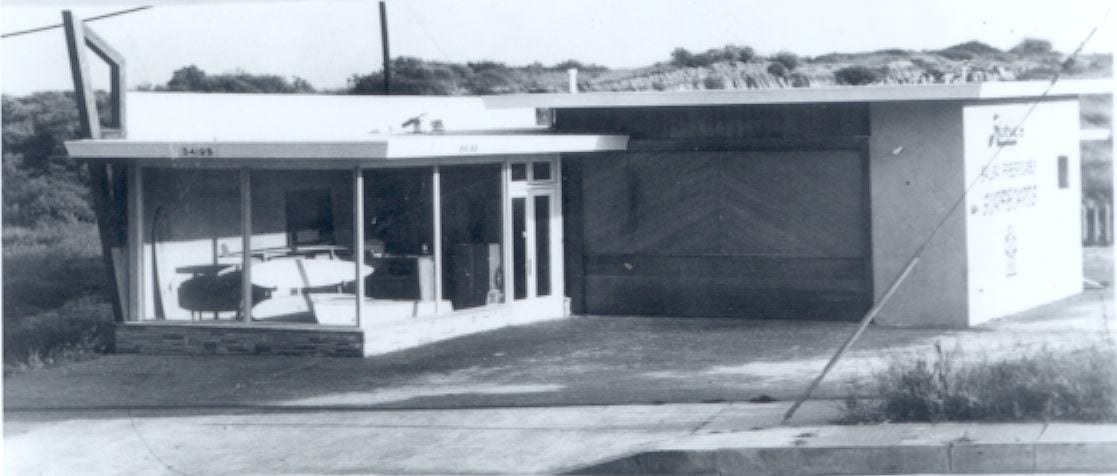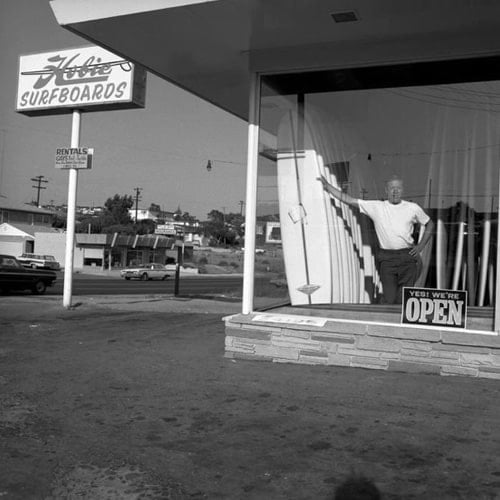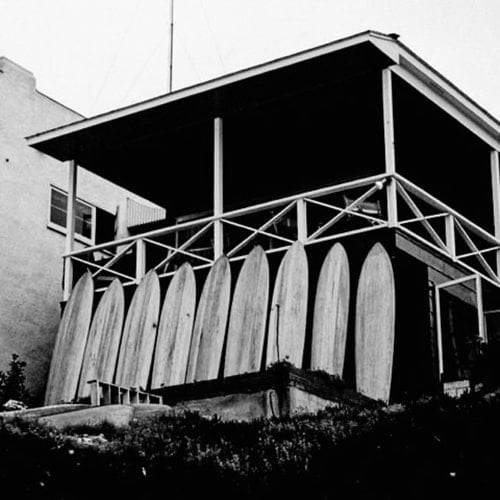Hobie History


During the summer of 1950, with his two loves firmly in hand: wood working and the ocean, and his dream of never having to wear hard-soled shoes in mind, Hobie Alter set a course that would influence the future of the “Sport of Kings.” Described as a man of great imagination he started out shaping surfboards in his family’s Laguna Beach summer home for friends, and ended up shaping a culture.
Phil Edwards: “[We ran] along a parallel course [but], he had a sort of magic touch.” His genius was in his ability to invent, experiment, and follow-through. “I started out making maybe twenty boards a summer for friends, and it sure beat being a lifeguard,” recalled Hobie for the Santa Ana Register in September 1981.
In 1954, his father, now grown tired of the 35 pounds of balsa wood shavings from each board shaped, and piled on his garage floor, bought for $1500.00, Hobie’s first shop – the first Southern California surf shop -- , in Dana Point on Pacific Coast Highway, two blocks from where the current Hobie Surf Shop stands. Hobie recalled for Scott Hulett in Longboard Magazine, “My Laguna run totaled 99 boards. Number 100 came with the purchase of the Dana Point shop.”
The Hobie Surfboards reputation for craftsmanship, innovation, and quality attracted a hall-of-fame team of inspired craftsman and athletes including Phil Edwards, Joey Cabell, Corky Carroll, Mickey Munoz, Mike Hynson, Dick Brewer, Terry Martin, Herbie Fletcher, and World Champion, Joyce Hoffman, among others.
In ’58 surfboards were, with a few exceptions, made primarily of balsa wood. Phil Edwards noted that balsa “was an expensive process,” with two-thirds of the woodboard lying on the shaping room floor at the end of the day. The ever industrious Hobie, remembered a winter’s evening in 1954 when Kent Doolittle dropped a small block of polyurethane foam into his hand. Impressed with its weight to strength ratio, its unwillingness to soak up water, and its ability to be glassed with polyester resin, Hobie filed the information away for possible future use. In ’58, with balsa becoming more expensive and harder to source, he knew the future had arrived.
Enter Gordon “Grubby” Clark (Clark Foam). Clark, an engineering student and laminator for Hobie Surfboards and Hobie teamed up to produce polyurethane foam for surfboard use. The expansion properties of “this junk,” as Hobie called it, was incredible. Mold after mold, and his father’s garage wall suffered the explosiveness of the “junk.” Fearing that the competition (Velzy, or Noll) would capture their formula, the duo rented a beaten down, weather bruised shack in an obscure coastal arroyo, blackened out the windows and set to work perfecting the new technology. “The revolution was subtle,” recalled Edwards in his 1967 autobiography, and complete. It forever changed the manufacturing of surfboards, and birthed the ocean sports lifestyle.
Today, Hobie Surfboards and Hobie Surf Shops continue with Hobie’s genius of invention, experimentation, follow-through, and inspired performance. Whether your interests are in our apparel lines, or hand-crafted surfboards, or in the “Back to the Future” stand up paddle boards for recreation, racing, or surfing. Our team will bring to you the finest products and product technology while providing you with a place to talk shop and make connections; a place where not only the surfing and SUP communities can call home, but the greater community can call home as well. A home that promotes the clean living, ocean oriented lifestyle that Hobie Alter gave us over seventy years ago.







